Unicorns In Southern Africa: The Fascinating Story Behind One-Horned Creatures In Rock Art
AncientPages.com - One-horned creatures are found in myths around the world. Although unicorns in different cultures have little to do with one another, they have multiple associations in European thought.
For example, the Roman natural historian Pliny the Elder wrote about unicorns in the first century AD. The unicorn features in both medieval Christian and Celtic beliefs, and is Scotland's national animal. The unicorn's prominence in European culture spread across the globe with colonization.
In southern Africa, colonial European ideas encountered older indigenous beliefs about one-horned creatures. I've highlighted this in a recent research article about some of the region's rock art.
Unicorns in Africa?
In the age of natural science, unicorns were gradually dismissed as mythical rather than biological creatures. But some thought that real animals with single horns might yet exist in the "unexplored wilds" of Africa.
A famous search for such evidence was carried out by the English traveler, writer and politician Sir John Barrow (1764-1848). He'd heard rumors about "unicorns" from the colonists and local people he encountered on his southern African travels.
One of those rumors was that unicorns were depicted in the rock paintings made by the indigenous San (Bushman) inhabitants of the region. Barrow searched unsuccessfully for them. Then, in mountains in what's now the Eastern Cape province, he found and copied an image of a unicorn (Figure 1).
Figure 1. Barrow’s unicorn.
But many were skeptical of his claims. His published copy resembles a European engraving rather than a San rock painting. More generally, critics have argued that rock paintings of unicorns were probably inspired by side-on views of gemsbok or South African oryxes—antelope with long, straight horns—or by rhinos (which might have one horn in India, but have two in southern Africa).
My research concludes that these criticisms don't take into account several factors that have since come to light. My paper provides further support for the claims that some San rock paintings do indeed depict one-horned creatures.
Multiple rock art depictions
Early documented rock paintings of one-horned creatures are known from 19th and 20th century copies by British geologist George Stow and South African teacher M. Helen Tongue.
I draw attention to additional examples of rock paintings of one-horned creatures (Figures 2 and 3).
Figure 2. A pair of spotted one-horned animals surrounded by fish. Credit: David M. Witelson
Collectively, these show that rock paintings of one-horned creatures can't be dismissed as naturalistic profile views of two-horned creatures, one horn covering the other.
Rain-animals
The second way in which my research engages with early criticisms is to draw attention to previously overlooked indigenous beliefs concerning one-horned beings.
The evidence suggests that the "unicorns" in indigenous mythical beliefs and rock art are actually animal-like forms of rain, known as rain-animals.
Tongue's colleague and co-worker, Dorothea Bleek, compared Stow's and Tongue's copies and suggested in 1909 that rock paintings of one-horned antelope were probably kinds of rain-animals, which she knew from |Xam San (Bushman) myths.
Rain-animals feature prominently in San ritual, myth and art. They take many forms, ranging from four-legged creatures to serpents. They were ritually captured and slaughtered by San rainmakers to cause rain to fall in specific places. Many |Xam myths tell of the dangerous male rain, sometimes personified as the "Rain", who turned pubescent girls and their families into frogs when the girls did not correctly observe their initiation taboos.
Figure 3. Digital drawing of original rock painting near the town of Dordrecht. Credit: David M. Witelson
Among other details, my paper highlights a fascinating and previously missed reference to a one-horned water creature. In one of the variants of a story told by |Han≠kass'o or Klein Jantje—a |Xam man who was an expert storyteller—a "water child" or juvenile rain-animal is said to have a single horn. The story was written down in phonetic script (to record the sounds of the San langauge) by Lucy Lloyd (Bleek's aunt) and translated into English.
The girl in |Han≠kass'o's story breaks the rules of her ritual puberty seclusion by going to a pond and catching (like fish) the children of the rain, which she cooks and eats. After a few times she struggles to catch another one: unlike the others, this last creature is "a grown-up water".
We know what made it recognizably grown-up: unlike the others, it had a single horn that poked out of the water. We have, therefore, the actual |Xam San words (which translate as "horned rain-child") used to describe this kind of rain-animal, which we find in the rock paintings in and around the Eastern Cape.
An intersection of beliefs
In the colonial period, indigenous people were exposed to European images of unicorns on crests, badges and buttons and through tales. In one of the recorded instances, indigenous people at the Cape saw the British royal coat of arms and commented on the unicorn in it. They recognized it as their "god", but this description, translated into English from an unknown indigenous idiom, probably refers to the creature's mythical nature rather than a genuine god-like status.
Foreign unicorn images may have gradually influenced local ones. Some rock paintings of one-horned creatures—dated by associated human figures in European dress to the colonial period—show horns pointing upward or forward (Figure 4) like the European unicorn, rather than backwards like antelopes, such as the eland (Figure 5), on which many rock paintings of one-horned rain-animals are modeled.
Figure 4. Rain-animals with horns that point up or curve forward at a site near Indwe. Credit: David M. Witelson
Figure 5. The horns of the common eland. Credit: Pxfuel, CC BY-SA
One-horned animals depicted in rock art are not mere rhinos nor antelope, nor are they the creatures of European myth.
Indigenous beliefs help us to explain that the uncanny resemblance between European unicorns and South African "unicorns" was pure chance. The mixing of foreign beliefs with local ones in colonial South Africa has hidden the independent, indigenous creature.
Written by David M. Witelson, Postdoctoral research fellow, University of the Witwatersrand
Provided by The Conversation
This article is republished from The Conversation under a Creative Commons license. Read the original article.
More From Ancient Pages
-
 Golden Stool Of Ashanti People And Legend Of The Black Cloud Appearing In The Sky
Artifacts | Sep 27, 2020
Golden Stool Of Ashanti People And Legend Of The Black Cloud Appearing In The Sky
Artifacts | Sep 27, 2020 -
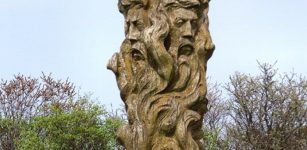 Svantevit – Four-Headed War God Of The Slavic Peoples Of Central Europe
Featured Stories | Sep 13, 2015
Svantevit – Four-Headed War God Of The Slavic Peoples Of Central Europe
Featured Stories | Sep 13, 2015 -
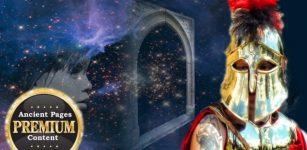 Encounter With Time Window At The Upper Current River And Curious Glimpses From The Past
Featured Stories | Jul 28, 2018
Encounter With Time Window At The Upper Current River And Curious Glimpses From The Past
Featured Stories | Jul 28, 2018 -
 12 Alchemy Symbols Explained
Ancient Symbols | Aug 20, 2018
12 Alchemy Symbols Explained
Ancient Symbols | Aug 20, 2018 -
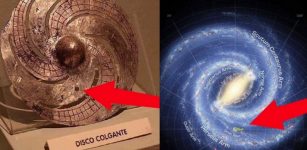 Mysterious 2,000-Year-Old Disco Colgante – Unknown High-Tech Device, Representation Of A Spiral Galaxy Or Something Else?
Artifacts | Nov 20, 2020
Mysterious 2,000-Year-Old Disco Colgante – Unknown High-Tech Device, Representation Of A Spiral Galaxy Or Something Else?
Artifacts | Nov 20, 2020 -
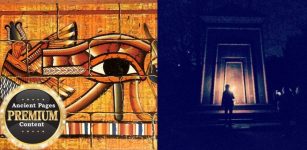 Is A Time Travel Machine Based On Secret Ancient Egyptian Knowledge Hidden In London?
Ancient Mysteries | Oct 20, 2017
Is A Time Travel Machine Based On Secret Ancient Egyptian Knowledge Hidden In London?
Ancient Mysteries | Oct 20, 2017 -
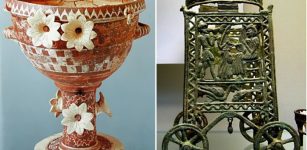 Minoans: Highly Advanced Bronze Age Civilization Of Europe
Featured Stories | Sep 23, 2023
Minoans: Highly Advanced Bronze Age Civilization Of Europe
Featured Stories | Sep 23, 2023 -
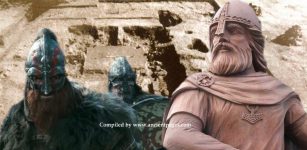 Viking Ivar The Boneless Could Be Buried In Repton – Remarkable Viking Burial Holds Clues To Where Ragnar Lodbrok’s Son Died
Featured Stories | Jun 17, 2022
Viking Ivar The Boneless Could Be Buried In Repton – Remarkable Viking Burial Holds Clues To Where Ragnar Lodbrok’s Son Died
Featured Stories | Jun 17, 2022 -
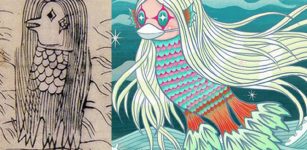 Yokai Amabie – Protective Ancient Spirit That Can Ward Off Epidemics
Featured Stories | Mar 30, 2020
Yokai Amabie – Protective Ancient Spirit That Can Ward Off Epidemics
Featured Stories | Mar 30, 2020 -
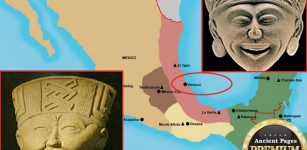 Curious Pre-Columbian Clay Figurines With Smiling Faces From Veracruz
Ancient Mysteries | Jan 29, 2018
Curious Pre-Columbian Clay Figurines With Smiling Faces From Veracruz
Ancient Mysteries | Jan 29, 2018 -
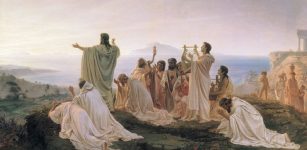 What Happened To The Pythagorean Brotherhood?
Ancient History Facts | Apr 5, 2021
What Happened To The Pythagorean Brotherhood?
Ancient History Facts | Apr 5, 2021 -
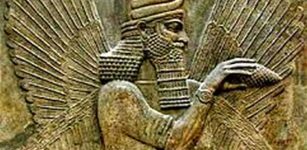 Glory And Fall Of Babylon Dedicated To The Cult Of Marduk
Featured Stories | Oct 11, 2016
Glory And Fall Of Babylon Dedicated To The Cult Of Marduk
Featured Stories | Oct 11, 2016 -
 Unusual Fog, Mysterious Forest Disappearances, And Unexplained Lights In Finland – What Is The Connection?
Featured Stories | Nov 14, 2024
Unusual Fog, Mysterious Forest Disappearances, And Unexplained Lights In Finland – What Is The Connection?
Featured Stories | Nov 14, 2024 -
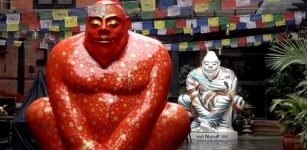 Why Are Statues Of Mythical Yeti Dividing People In The Himalayas?
Featured Stories | Feb 18, 2020
Why Are Statues Of Mythical Yeti Dividing People In The Himalayas?
Featured Stories | Feb 18, 2020 -
 Head Of The Great Sphinx Was Changed – It’s The Gateway To A Secret Underground City– Historians Suggest
Featured Stories | Jan 20, 2018
Head Of The Great Sphinx Was Changed – It’s The Gateway To A Secret Underground City– Historians Suggest
Featured Stories | Jan 20, 2018 -
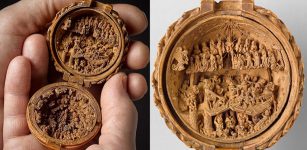 Rare Gothic Boxwood Miniatures – Precious Marvel Of Human Ingenuity
Artifacts | Dec 30, 2019
Rare Gothic Boxwood Miniatures – Precious Marvel Of Human Ingenuity
Artifacts | Dec 30, 2019 -
 Stunning Reconstruction Of Caterthun Iron Age Forts In The Grampian Mountains, Scotland
Civilizations | Nov 17, 2016
Stunning Reconstruction Of Caterthun Iron Age Forts In The Grampian Mountains, Scotland
Civilizations | Nov 17, 2016 -
 Famous Viking Ragnar Lodbrok – Legendary Fearless Sea-King Of The North
Featured Stories | Apr 24, 2016
Famous Viking Ragnar Lodbrok – Legendary Fearless Sea-King Of The North
Featured Stories | Apr 24, 2016 -
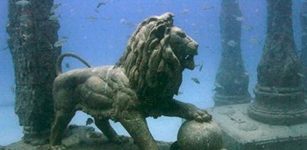 Stunning Underwater Photos Reveal Secrets Of Legendary Lost City Of Heracleion
Featured Stories | May 4, 2013
Stunning Underwater Photos Reveal Secrets Of Legendary Lost City Of Heracleion
Featured Stories | May 4, 2013 -
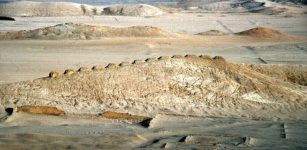 Mystery Of The Thirteen Towers Of Chankillo – Oldest ‘Full-Service Observatory’ In The Western Hemisphere
Featured Stories | Nov 6, 2018
Mystery Of The Thirteen Towers Of Chankillo – Oldest ‘Full-Service Observatory’ In The Western Hemisphere
Featured Stories | Nov 6, 2018





